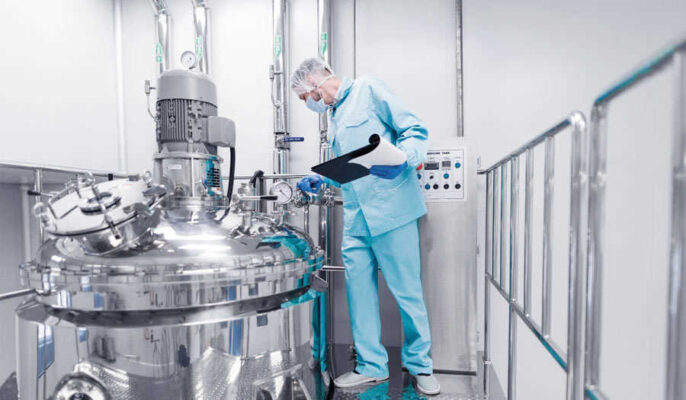Anyone who has worked with brewer’s yeast knows they need to give it a comfortable working environment to maintain its functionality. Arrested fermentation is a fermentation that stops before all the available sugar in the beer has been converted to alcohol and carbon dioxide. If the bubbles in the airlock slow down before the beer reaches final gravity, fermentation may stall. Don’t worry, there is a way around this. Before we talk about how to fix it, make sure your fermentation is stuck.
Ways to Check for a Stalled Fermentation
- Beer specific gravity no longer drops or very . Three days in a row of readings on the hydrometer and the readings stay the same and higher than expected, it’s stuck.
- The temperature in the fermentation zone is between 65-72. If it’s too cold, the yeast can’t do its job. If it’s too hot, the yeast will finish and there will be too much off-flavor development.
What is stalled fermentation?
Instead of fermenting well before reaching the final gravity target, the yeast quits, causing a stalled or stagnant fermentation. A stagnant fermentation is detected by noticing that your pH does not drop within the first 24 hours. Beer doesn’t ferment at a constant rate, so after a day, don’t worry. It is stagnant until the gravity readings are stagnant for 48-72 hours.
What is the reason for the stagnation of fermentation?
Stagnant fermentation has long been an issue for the wine industry both wine quality and economic impact.
The most common causes:
- Yeast preparation and maladaptation
- Nutrient deficiency
- Too little yeast input
- Insufficient nutrients in the wort to maintain yeast activity
- Excessive sugar content
- The temperature is too cold or too hot
- PH value is too low
- Poor inoculation technique

How to Prevent Stalled Fermentation
If good quality yeast has been purchased or propagated, its vigor and vigor must be maintained. To do this, store each yeast slurry in airtight, sterilized containers, at temperatures below 42 degrees but above freezing, and handle them in a hygienic manner to avoid bacteria or cross-contamination.
Fermentation and fermenting are done at the correct temperature, avoiding sudden fluctuations. Although the exact number of strains can almost always be obtained from the supplier or manufacturer. But in general, ale yeast likes to survive in worts well below 80 degrees, hovering in the 68 degree range. Most lager yeasts thrive between 45-55 degrees.
Solve the problem of fermentation stagnation
Proper Yeast Preparation
Yeast rehydration is one of the most important steps in fermentation. Sterols play a role in maintaining the integrity and fluidity of yeast membranes, increasing their resistance to alcohol.
Provides proper yeast nutrition to prevent fermentation stalls
In the early stages of fermentation, yeast must amino acids as well as vitamins and minerals to achieve adequate population growth without increased temperature and stress. Encouraging the early accumulation of long-chain unsaturated fatty acids and sterols contributes to improved yeast endurance and survival throughout fermentation.
How to deal with high initial Brix?
Adding water to adjust the initial Brix is a good option to control the alcohol content and reduce the risk of a stalled fermentation. There are two ways to add water: replace the stock solution volume with water or add water. Adding water helps reduce the initial Brix, but also dilutes yeast nutrients, total acidity and phenolic compounds. So, it is very important to check and adjust the acidity and pH and YAN to the proper levels after adding water.
Prevent microbial contamination
Microbial contamination in grapes and grape juice can have serious effects on fermentation and wine quality. To prevent fermentation stalls, it is necessary to control the microbial population and ensure that the dominant population for fermentation is Saccharomyces cerevisiae. SO2 is the most used antimicrobial agent, but it is ineffective at high pH, it inhibits and stimulates Saccharomyces cerevisiae, and some spoilage microorganisms are resistant to it.
Temperature shock
Temperature can affect autofocus when it’s too cold or too hot. Each yeast strain has an optimal temperature range, and anything outside of this range will cause yeast stress. If the temperature gets too high (or if it spikes at any point), the yeast may no longer be viable and will need to be re-inoculated. If the temperature is too low, try warming the wine .
How to restart a stalled fermentation?
Check the temperature and adjust . If the tank environment is controlled, you may have read that you can aerate the wort at this point to allow the yeast to breathe and thus reproduce. To avoid possible off-flavors when waking up the yeast, you can refer to the following steps:
- Take 4 oz. (113 g) dry malt extract (DME), add water to make a total of 1 quart (1 L), and stir until DME is dissolved.
- Add a little yeast nutrient and boil the solution for 20 minutes, then add water as needed and cool to about 70 °F (21 °C).
- Aerate and pitch with a fresh sample of yeast, and if you have a stir plate, keep stirring the wort you add.
- Keep at room temperature until vigorous fermentation, then add this starter to the beer.
- For best results, the beer should be left in the fermenter during this time to allow a large amount of dissolved CO2 to escape.




